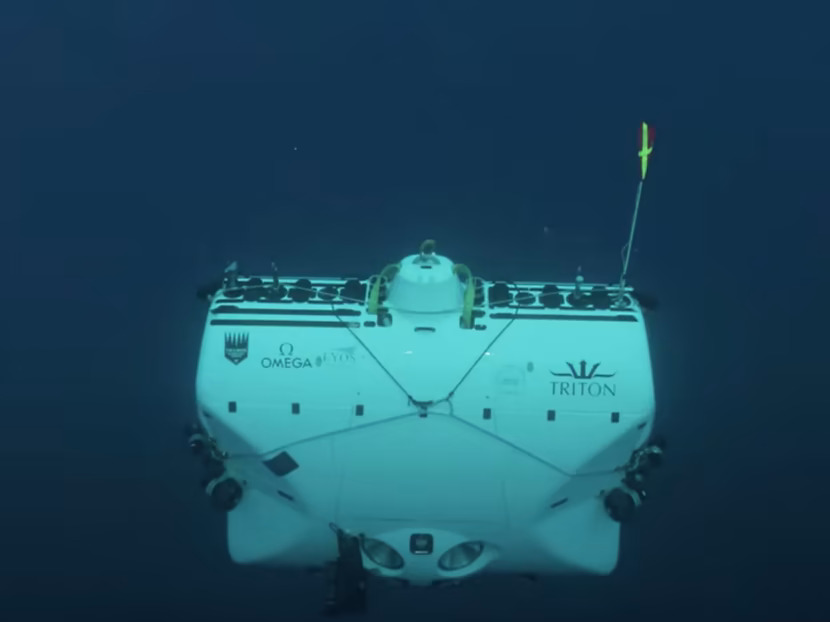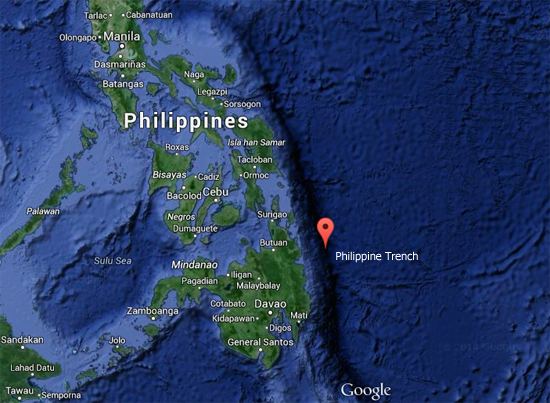When you picture Southeast Asia, you probably envision emerald-green rice terraces, sun-soaked beaches, or vibrant street food markets. But hidden beneath the shimmering blue waters lies an equally remarkable and barely explored realm—a world so extreme it defies imagination.
Welcome to the Philippine Trench, the deepest known place in Southeast Asia and one of the most mysterious corners of our planet. This colossal underwater chasm stretches along the eastern coast of the Philippines, running nearly parallel to the islands of Samar and Mindanao. Its very existence is a testament to Earth’s restless nature, where colossal tectonic plates collide, dive beneath each other, and slowly reshape continents over millions of years.
The trench reaches an astounding depth of about 10,540 meters, or 34,580 feet. That’s so deep that if you dropped Mount Everest into it, the mountain’s peak would still sit more than a mile beneath the waves. Down there, in the perpetual darkness, the water pressure is more than a thousand times what we feel at sea level—enough to crush any ordinary submarine or piece of equipment into scrap metal. Temperatures hover just above freezing, and the environment seems so hostile that early explorers once believed nothing could survive in such conditions.
Life in the Darkness
Yet life, as it often does, finds a way. In recent years, teams of scientists piloting deep-sea submersibles have ventured into this abyss and found it teeming with life-forms that look like creatures from a science fiction film. There are ghostly snailfish with transparent skin that reveals their internal organs. Giant amphipods the size of a forearm scuttle across the seafloor, searching for scraps. Even stranger, researchers have discovered microbes that live off chemicals seeping from deep within Earth’s crust, drawing energy from reactions that have nothing to do with sunlight.

In 2021, Filipino scientist takes first ever journey to third deepest ocean trench on Earth, finds plastic | Photo by Verola Media/Caladan Oceanic
The Philippine Trench belongs to a handful of ocean trenches known as hadal zones, a name derived from Hades, the Greek underworld. These zones begin around 6,000 meters below sea level and plunge all the way to the ocean’s greatest depths. Despite our satellites, sonar, and robotic explorers, less than five percent of the global ocean floor has been mapped in detail. In many ways, the Philippine Trench remains one of Earth’s last great frontiers.
Why the Philippine Trench Matters
Some might wonder why this remote, pitch-black place deserves any attention at all. The answer is more connected to our daily lives than you might expect. The Philippine Trench is part of the infamous Ring of Fire, an arc of intense seismic and volcanic activity that encircles the Pacific Ocean. Movements in these deep trenches can trigger earthquakes and tsunamis, like the events that have devastated coastal communities in the past. By studying the trench’s geology, scientists hope to better predict and prepare for natural disasters that could impact millions across the region.
But there is more at stake than hazard monitoring. The deep ocean is also an enormous reservoir of carbon and heat. It plays a critical role in regulating our planet’s climate, absorbing much of the carbon dioxide humans release into the atmosphere. Understanding how deep-sea currents and sediments store this carbon could hold the key to more accurate climate models and, ultimately, to solutions for mitigating global warming.
And then there is the promise of discovery itself. Many deep-sea organisms have evolved chemical compounds that help them survive crushing pressure, freezing temperatures, and total darkness. Some of these compounds show early promise as antibiotics or treatments for diseases, including cancer. As pharmaceutical researchers look to nature for inspiration, the genetic blueprints of trench-dwelling microbes could someday contribute to lifesaving medicines.
Today, Southeast Asian researchers and institutions are increasingly joining forces with international partners to unlock these mysteries. The Philippines, in particular, has been ramping up efforts to explore the Philippine Trench, not just to satisfy scientific curiosity but to build research capacity and strengthen resilience against earthquakes and tsunamis. Marine biologists are eager to catalog the region’s unique biodiversity before it is altered or damaged by deep-sea mining and climate change.
Looking ahead, the future of deep-ocean exploration will likely feature fleets of autonomous submersibles capable of descending thousands of meters without human pilots. Equipped with high-resolution cameras and sampling tools, these robotic explorers will map trench walls, collect specimens, and capture data about life in the hadal zone. Each mission will bring us closer to understanding how our planet works—and how life can thrive in the most extreme environments imaginable.
The next time you gaze across the vast expanse of the Philippine Sea or fly over the string of islands dotting Southeast Asia’s coastline, remember that hidden beneath those waves lies an entire universe waiting to be discovered. The Philippine Trench is not just a record in a textbook. It is a reminder that our region sits atop a dynamic, living planet, whose secrets are still unfolding.
And perhaps, in exploring this abyss, we will uncover insights that help us protect our coasts, heal our bodies, and better understand our place in the universe. After all, in the darkness of the Philippine Trench, we might just find the light of discovery.




















